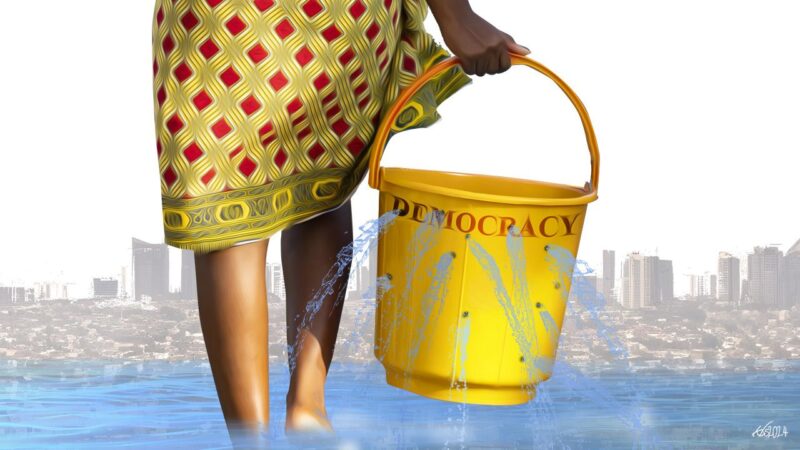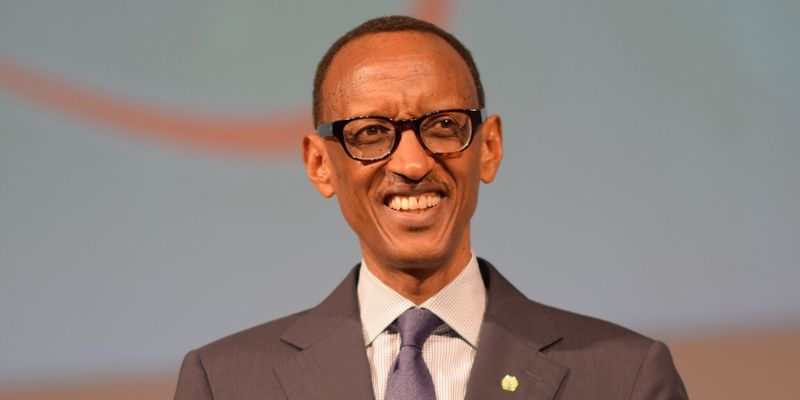One of the most memorable events on the calendar of creative writing on the continent was the founding of the landmark Heinemann African Writers Series (AWS), which brought African writing to the attention of the world and to all Africans who could read English. Sadly, the pioneer writers unveiled by this series are ageing and in need of successors.
Publishing is a fairly old trade on the African continent. By the seventeenth century publications in Arabic were already in circulation in western Sudan’s trading centres. Nigeria and South Africa were among the first countries in sub-Saharan Africa where the first mission-run printing presses were set up in the mid-eighteenth century, giving them a head start in literacy on the continent.
Oxford University Press Nigeria (now University Press plc) opened in Ibadan in 1949, paving the way for Onibonoje Press which started operations in 1959. Longman and Macmillan came to Nigeria later, in 1962 and 1965 respectively. These multinationals also expanded into Southern Africa in the 1960s, where Jan Carl Juta had already blazed the trail, establishing a commercial press in Cape Town way back in 1853.
Fiction did not form part of the catalogue put out by these early presses, whose main concern was to translate the Bible into indigenous languages for the natives, and thus help spread the religion and the Christianising mission into the hinterland, in the process softening up the native for colonisation. Any other literature was meant to support the technical and industrial training the missionaries offered at their mission centres, and it was designed to prepare the converts to fit into the clerical and technical positions in the white-run economy when the colonial machine came into full swing.
The East African Literature Bureau is the earliest known publishing house in the East Africa region, having been established in 1947 as an offshoot of the missionary-owned Ndia Kuu Press. It had offices in Dar es Salaam, Nairobi and Kampala. The first truly indigenous publishing house, the East African Publishing House would emerge much later in 1965.
Fiction did not form part of the catalogue put out by these early presses, whose main concern was to translate the Bible into indigenous languages that could be understood by the natives, and thus help spread the religion and the Christianising mission into the hinterland, in the process softening up the native for colonisation.
The 1970s saw the establishment of university presses in Nigeria such as the University of Nigeria Press and the University of Lagos Press that paved the way for Africans to take control of indigenous publishing. In Kenya this happened in the 1980s, with the establishment of major independent African publishers such as the East African Educational Publishers (EAEP) and Longhorn. Baobab Press started operations in Zimbabwe in 1988, alongside other publishers who came into business in Southern Africa around this time.
One of the reasons why AWS was successful was because Heinemann had a foot in all the leading capitals throughout the Commonwealth, a physical network through which its writers could move across international borders. It also had the financial muscle. When Heinemann (East Africa) was bought out by independent African business people in the mid-1980s, there was a sense of pride in the fact that finally Africans would be running their own affairs, and getting to keep the money circulating amongst themselves. But after the dust settled, it soon became apparent that this crop of entrepreneurs were concerned only with clawing out and ring-fencing tiny turfs of their own; they had no intention of creating the cross-turf and cross-border networks that are so crucial in publishing. Moreover, they focused on educational publishing, which—though lucrative and safe—unlike fiction, says nothing about a region’s culture.
The few African writers who wanted to be published beyond their home cities and villages now either had to seek publishers abroad, or forget fiction all together. As for those who opted to play it safe within the system, they had to submit to the yoke of the censor, tailoring their books to the whims of the gatekeepers at the Ministry of Education. This is the reason why some of the best-known contemporary writers on the continent are all published abroad. By prostrating before the god of profit the publishers lost sight of what publishing is supposed to be, particularly in such a grossly misunderstood and misrepresented region of the world as Africa. According to UNESCO, Africa accounts for only 1.2 per cent of the world’s total book production.
The biggest indigenous publishing house in the region, East African Educational Publishers, started operations in 1986, having bought out Heinemann Educational Books (East Africa). Other multinationals like Longman and Evans would similarly evolve into locally-owned entities as the once vibrant East African Community disintegrated. It is this indigenisation that is at the heart of the problems currently bedeviling writers from the region and from other parts of Africa.
Walter Bgoya of Mkuki na Nyota Publishers of Tanzania asserts that indigenous publishers have a crucial role to play that can never be fulfilled by transnational publishers. “Autonomous publishing is the response to the crisis in the cultural life of a nation in the realm of education, literature and art,” he is quoted in the book Publishing and Book Trade in Kenya compiled by Ruth Makotsi and Lily Nyariki. “It is for this reason that no matter how well the transnational publishing house may perform and how appropriate it considers its books, it cannot be an acceptable alternative to autonomous publishing firms.”
Bgoya goes on to recognise the responsibilities vested in publishers and the important role that publishing plays in the development of regional cultures. However, in Hans Zell’s The Production and Marketing of African Books, Bgoya admits that the quality of the books that have been published since the exit of the multinationals, though improving, is still not satisfactory in terms of design, editing, proof-reading, indexing and paper quality. His contemporary, veteran Kenyan publisher Henry Chakava of East African Educational Publishers, avers, taking issue with the binding, printing and paper quality of the textbooks flooding the regional market.
“It is for this reason that no matter how well the transnational publishing house may perform and how appropriate it considers its books, it cannot be an acceptable alternative to autonomous publishing firms.”
Still, the blame for their lackluster performance cannot be put solely on publishers. Others have played a role. In order for books from Africa to compete with those from India and the West, they must compare well in terms of paper quality, the quality of the ink used, the binding technique, the printing technology employed, and so on. Strangely, while Africa is still very much what Zell refers to as a “bookless society”, African governments still insist on imposing heavy taxes on paper, printing ink and other raw materials that go into the production of books. This forces publishers to resort to the cheapest options available in order to stay in business.
But the business environment notwithstanding, the business practices of some of these indigenous publishers are also to blame for the dearth of new published work. Although they know very well that they do not have the capacity nor the understanding of cross-territory trade even within the region, almost all these publishers insist on new authors granting them world rights for their work, which makes them more of speculators than publishers.
These skewed contracts have ended up frustrating the careers of emerging authors, who have opted to either self-publish or look for publishers abroad. Yet if you speak to any of these publishers they will quickly blame their failures in publishing fiction on the prevailing business environment. They will tell you that fiction doesn’t sell. Which begs the question: how come Heinemann succeeded with the African Writers Series? What about the Onitsha Market pamphleteers of post-World War II Nigeria, still going strong seventy years on?
Publishing abroad has its challenges however. When Chinua Achebe finished writing his novel Things Fall Apart in 1957, he sent the only hand-written copy of the manuscript along with a postal order for £32—a princely sum at the time—to a London secretarial agency to have it typeset. That would probably have been the last time he saw the manuscript because, after receiving the money, the typesetter set it aside and forgot about the matter. Had Achebe not made a follow-up through a friend, who discovered the manuscript gathering dust in the typesetter’s office, it would probably have been lost.
Although they know very well that they do not have the capacity and understanding of cross-territory trade even within the region, almost all these publishers insist on new authors granting them world rights for their work, which makes them more of speculators than publishers.
Many African writers seeking to publish abroad have since faced similar challenges of access and have had to overcome seemingly insurmountable obstacles in order to see their works in print. After her French publisher Fernand Nathan merged with Larousse in 1989, the series in which Ivorian writer Véronique Tadjo had published her first novel, A vol d’oiseau (As the Crow Flies), was discontinued, and she not only suddenly found herself without a publisher for her well-publicised book, but she and a number of other writers had to team up to fight to have their terminal royalties paid. Thereafter she had to decide whether to take the novel to an Ivorian publisher or go shopping for one in France, where she had been born. In Charles Larson’s book The Ordeal of the African Writer, she says:
“My choice (of France) was due to the fact that Ivorian publishing was in a bad state after the financial collapse of the two main government-owned local publishers. The situation was more or less the same elsewhere on the continent. To publish in Africa would have meant to be confined within the borders of the country from where the publisher in question operated. It also meant the risk of having an editing job that wasn’t satisfying.”
And her misgivings proved founded, because shortly thereafter, when her author’s proof of a manuscript of poetry she had submitted to Ivorian publisher Les Nouvelles Éditions du Sénégal arrived in the mail, they had done such a shoddy job of the editing and layout that she refused to sign the contract.
Such stories abound and could make for a whole book if all the contemporary African writers published in the West agreed to share their experiences. But the truth is that, short of winning a major prize like the Commonwealth, Caine, Noma or Orange, the chances of an African writer attracting the attention of a good agent or mainstream trade publisher in Europe or the United States are very slim indeed. And even were they to survive and get published, they would still have to grapple with the complicated task of computing royalties. After the statutory government deductions of thirty per cent tax and the agent’s ten per cent, the cheque eventually banked by the author will have diminished alarmingly.
The African Publishers Network (APNET) was formed In 1992 to bring together publishers from 45 countries across Africa. Although a welcome initiative in the consolidation of the publishing initiatives by the emergent players on the continent, going by the catalogues put out by its active members, APNET’s main mandate was still educational publishing. In its 27 years of existence, APNET has largely failed to live up to the expectations of the region’s fiction writers.
In 1998, the African Writers-Publishers Seminar was held in Arusha, Tanzania to try to find a solution to the existing acrimony between authors and publishers. After heated deliberations, both parties resolved to work to make things better. Twenty years later, the situation remains the same, with most authors still in the dark about the status of books submitted to the publishers, and still having to fight to have their meager royalties paid.
A notable exception in this morass is Baobab Books of Zimbabwe, which gave us names like Chenjerai Hove, David Mungoshi, Dambudzo Marechera, Shimmer Chinodya and Yvonne Vera during the ten years in which the publisher was active before being put up for sale in 1998. Although criticised for the “density” of its publications, Baobab is an exception because of the attention its editor, Irene Staunton, paid to the editing process and the design and quality of her books.
But Baobab didn’t happen by accident. One of the reasons why its writers gained international recognition was the Zimbabwe International Book Fair, which has over the years gained international repute and the support of active sponsors based in Europe, leveraging the old established European networks that enabled the AWS to flourish in the past, and opening them to contemporary Zimbabwean writers.
Weaver Press, co-founded by Irene Staunton in 1998 after her stint at Baobab Books, is another notable Zimbabwean publisher of prize-winning fiction and specialising in books on political and social history, short-story anthologies and fiction by women writers. Zimbabwe and southern Africa have done considerably well compared to East Africa, thanks to active promotion by dedicated online portals like the Zimbabwe Reads website.
Around the turn of the millennium there was a measure of excitement when new players like Kwani? in Kenya and Chimurenga in Zimbabwe came onto the scene, driven by a youthful crop of writers who wanted to do something to fill the vacuum left by the departure of the AWS, and who were disillusioned by the way indigenous publishers were handling fiction. Most of these writers had travelled or studied abroad and experienced the vibrancy of the literary scene there.
Chimurenga,—which identifies as a pan-African platform of writing, art and politics—was founded in 2002 by Ntone Edjabe as a vehicle to give voice to Africans both at home and in the diaspora. It runs Chimurenga Magazine, a magazine of the arts, culture and politics, together with a quarterly broadsheet called The Chronic. It also runs the Chimurenga Library, an online portal where pan-African periodicals and books can be accessed.
Kwani? in Kenya and Chimurenga in Zimbabwe came on the scene driven by a youthful crop of writers who wanted to do something to fill the vacuum left by the departure of AWS, and who were largely disillusioned by the way the indigenous publishers were handling fiction.
As for Kwani?, it was started in 2002, the brainchild of its founding editor Binyavanga Wainaina, who put out its first literary journal the following year. In addition to the annual journal, Kwani? would later branch out into publishing book-length fiction and pocket-size booklets under its Kwanini? series in the same spirit as the Mini Modern Classics that Penguin put out on its fiftieth anniversary in 2011.
Over in Nigeria, writers have also played their part to fill the vacuum. One of the publishing firms that emerged on the scene was Parrésia Publishers, founded by writers Azafi Ogosi and Richard Ali in 2012, and which runs a number of imprints Including Cordite which is co-owned and edited by Helon Habila, winner of the 2001 Caine Prize. But Parrésia has had to contend with the harsh realities of the market, which allows it to put out only five fiction titles a year through the traditional publishing model. The rest of the catalogue is put out under a subsidy arrangement with the authors, who fund the production of their own books.
Although these new players have attempted to fill the vacuum left by the departure of Heinemann’s AWS, they are lagging behind in the creation of a pan-African catalogue of fiction comparable to the AWS series. One explanation could be the marketplace, which is riddled with cartels, compounded by the rampant piracy facilitated by modern technology that makes it easy to access and share book files online for free. Cheap printing technologies and lack of policies and laws to safeguard legitimate publishing eat further into the profits of legitimate businesses.
All the same, attempts have been made to find a replacement with a pan-African offering similar to the AWS but they have yet to bear fruit. Sometime in 2012 Kwani? put out a call for entries for the Kwani? Manuscript Prize, an Africa-wide project that was to be judged anonymously by an international panel. The initiative generated considerable excitement among African writers but in the end Kwani? failed to publish all the shortlisted titles.
The unique thing about African publishing is that the success of publishing houses is attributed to the tenacity of individuals rather than to an institutional framework and culture. The AWS owes its success to its editor Alan Hill and to Chinua Achebe, who selected the first 100 writers in the AWS catalogue. For Kwani? it was Binyavanga Wainaina; Irene Staunton for Baobab. In 2014 Binyavanga was charged with coming up with what many thought would be that long-sought-after successor to the AWS. He compiled a list of 39 authors from all over Africa who were then aged 39 years and below. As we converged on Ken Saro-Wiwa’s hometown, Port Harcourt, we thought that it was finally going to happen, that the publisher of the ‘Africa ’39’ project, Bloomsbury, was going to rise to the occasion and ask for our best manuscripts for a book series. It did not go as we had anticipated.
But perhaps the biggest threat of fragmentation is that, with every player pulling in their own direction depending on what best suits their business model, it makes it impossible to have a central reference point, especially to an outsider looking in trying to discover new writing from Africa. This makes it difficult to establish and maintain standards in the business, and makes it even more difficult for new experimental writing to break through, further stifling innovation and leaving the doors wide open to duplicity and mediocrity.
These are hurdles that have already been overcome in Western markets, which naturally appeals to those African writers who want to rise above the mediocrity in their own backyard and make something of their craft.
That said, much as publishing in the West offers the African writer the much needed exposure and commercial success, and accords them the peace of mind to embark on their next project, in the long run it is not the panacea to all their problems, as Yvonne Vera found out when she decided to abandon her thriving and promising literary career in Canada in the late 90s and return to her native Bulawayo. “I did not want to be interpreted but to be heard,” she told Ish Mafundikwa in an interview for Skyhost. “I find that immediacy very vital.”
After the awards are bagged and fortunes made, there’s always that nagging question of who a writer truly writes for. This is because the novelist occupies a totally different perch from that of the Hollywood stars. Writing is very much about identity, about the politics of who we are individually and collectively, and what space we occupy in the global order. As we say here in Africa, everyone’s umbilical cord is buried somewhere, even that of the much-fêted African writer abroad. That is what was tagging at Vera’s heartstrings, forcing her to trade in her “global citizenship”. For Véronique Tadjo, the solution to straddling these two worlds was two-pronged: a joint publication where one edition is produced and priced for the Western market, and another for the African market.
And so, sadly for African writers, talent is not enough; unlike other writers elsewhere, the African writer must go the extra mile to get their work on the market. But despite the hellish conditions under which they work, these writers still bedazzle us with a literary gem every now and then.
Stanley Gazemba’s latest book, Dog Meat Samosa, is published by Regal House Publishing in the US.








